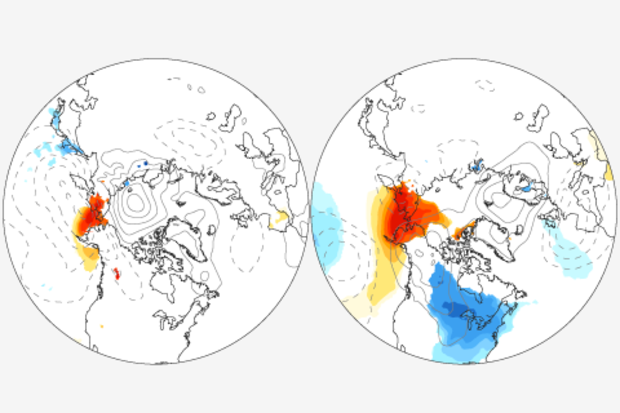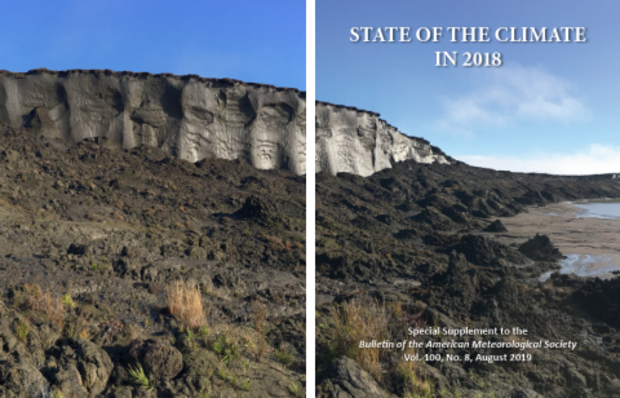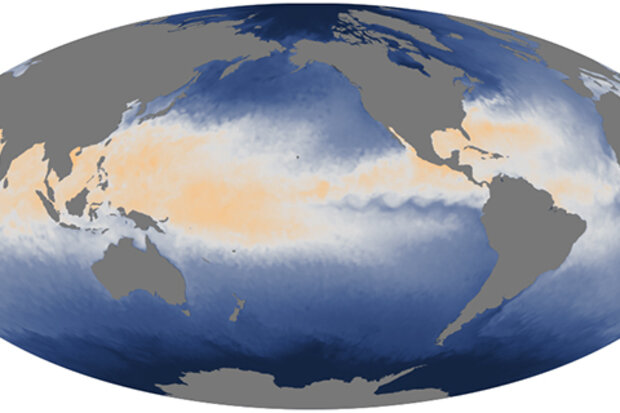Blogs
There’s about an 85% chance the tropical Pacific will remain ENSO-neutral through the fall, and a 55-60% chance of continued neutral through the spring. We’ll talk about the current conditions and check in on the Atlantic hurricane season.
A Nightmare on ENSO Street
But wait, you say—Niño3.4 measured 0.5°C above the long-term mean last week! Doesn’t that mean El Niño? While the El Niño threshold is indeed 0.5°C above average, that must persist for several months in a row, and provoke an atmospheric response, to qualify as El Niño conditions. The sea surface temperature in our various ENSO monitoring regions can vary from week to week, a…
Read article
In recent years, a popular debate has been occurring within the climate community. No, it’s not whether climate change is occurring and caused by humans. (It is.) Instead, it’s regarding how much of an effect, if any, the rapid warming of Earth’s frozen cake-topper we call the Arctic, and the corresponding reduction in Arctic sea ice, has been having on winter across the mid-latitudes where most of us live.
The debate arose because, while winters have in general warmed during the last century, some regions have shown a weak cooling trend for certain periods. A cooling trend, from around 1990 through 2013 in landmasses across the mid-latitudes, has been noted in previous research (Cohe…
Read article
El Niño 2019 is a thing of the past, and neutral conditions reign, as my brilliant blog brother Nat covered last month. Thanks, Nat!
So where do we go from here? Forecasters estimate a 75% probability that we’ll hang out in neutral through the fall, with a 55-60% chance of continued neutral conditions through the spring of 2020. Most of the climate models estimate that the surface temperature of the tropical Pacific Ocean will remain slightly above average, but below the El Niño threshold of 0.5°C (0.9°F) above the long-term average.
The territory between the El Niño threshold and La Niña (0.5°C below the long-term average) is designated ENSO-neutral. (ENSO = El Niño/Southern Oscillati…
Read article
The climate system we share is big and complex. Assessments like the State of the Climate depend on expertise from around the world and around the sciences. This year's "Meet the Author" profile features two contributors to the African section of the "Regional Climates" chapter. Their leadership and perspective make the report stronger. Both are involved in international work, often with the World Meteorological Organization (WMO), that brings their expertise to the regional and global arena.
Fatou Sima is the Principal Meteorologist overseeing the Meteorological Division and Climatological unit in The Gambia's Department of Water Resources. She received her M.Sc. in Applied Meteorol…
Read article
The El Niño of 2019 is officially done. Near-average conditions in the tropical Pacific indicate that we have returned to ENSO-neutral conditions (neither El Niño or La Niña is present). Forecasters continue to favor ENSO-neutral (50-55% chance) through the Northern Hemisphere winter.
What’s on our plate?
The July Niño3.4 index, our primary index for monitoring ENSO, was 0.4°C above the long-term average, falling below the El Niño threshold of 0.5°C for the first time since last September. In addition, tropical atmospheric conditions have trended toward neutral, as the cloudiness and rainfall over the Pacific were near average over the past month. The trade winds also have been n…
Read article




